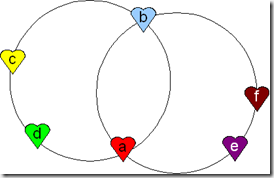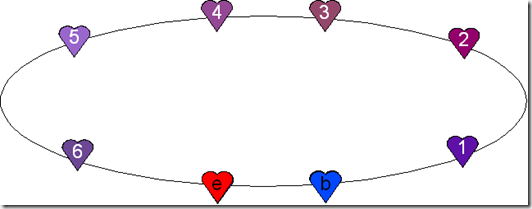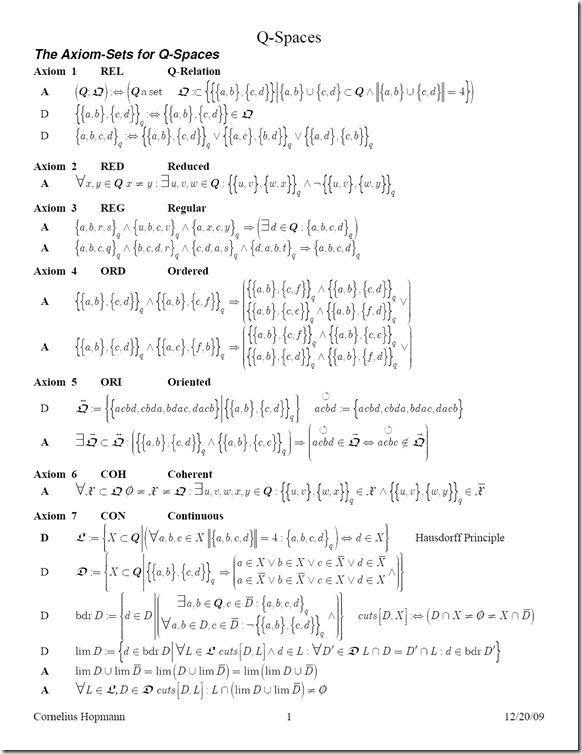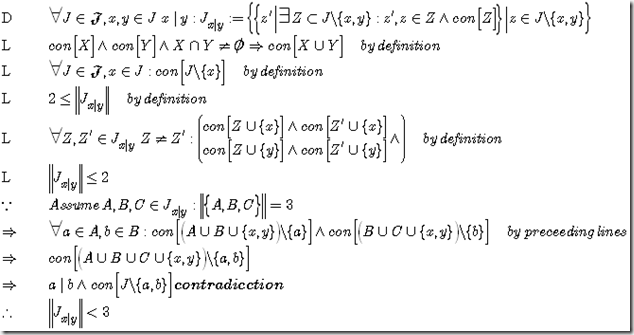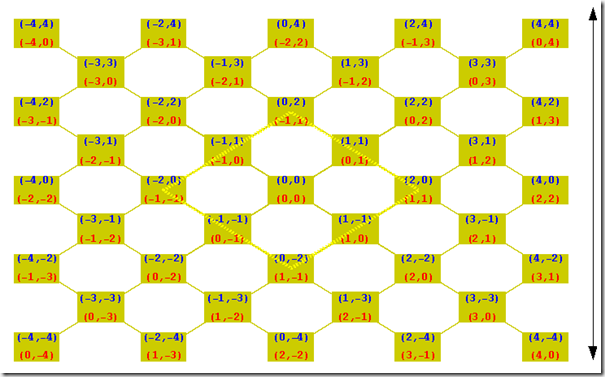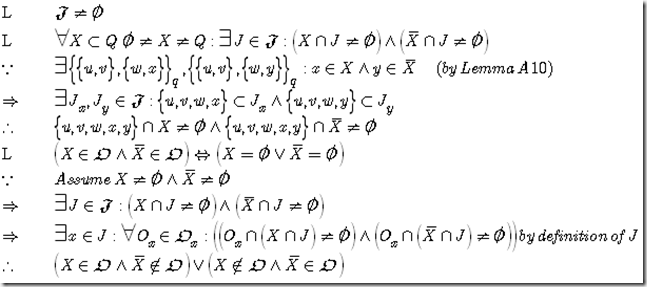Reformulated without changing its essential content.
Axiom 7 finally ties together classically continuous and classically countable models. As shown in a later post, it defines a new type of Topology valid for both.
We will walk through the construction step by step.
Step 1: Lines 
Step 2: Generalized Dedekind cuts 
Step 3: Borders of a Generalized Dedekind cut and what a cut cuts  As border of a Generalized Dedekind cut we define all elements, that are not properly contained in some interval in D, properly means that there should be at least one complementary element outside. A cut cuts a set, if there are elements inside and outside the cut.
As border of a Generalized Dedekind cut we define all elements, that are not properly contained in some interval in D, properly means that there should be at least one complementary element outside. A cut cuts a set, if there are elements inside and outside the cut.
Step 4: Line-Limits of a Generalized Dedekind cut Step 4 is crucial in the whole construction. Actually we are only interested in limiting points on lines, yet for these we will accept only those border-elements as true or objective limits, that do not depend on a specific cut, i.e. when the piece cut-out by two cuts are the same, then there should be –if any- the same limit.
Step 5: The Symmetry-Axiom ![]()
In the traditional definition of a Dedekind-cut, either the lower set has a maximal or the upper set has a minimal element, whence crossing the border a maximal element becomes minimal vice versa.
Step 6: The Cut-Axiom
After these lengthy preparations, the final axioms is short: all Lines should have well defined limits for their pieces, when cut by a Generalized Dedekind cut .
Some Remarks:
- The basic idea for this type of Generalized Dedekind-cut for partial orders appears already in early papers of Carl Adam Petri. While keeping the basic idea, our definition of a cut itself is different and not only limited to combinatorial i.e. countable partial orders. Yet Petri was the first to note that Dedekind-complete for partial orders might be something quite different than rather requiring classical continuity on all lines (respectively all completely ordered subsets).
- Nonetheless, for sets consisting only out of a single line or that are totally ordered sets, our definition is equivalent to the one introduced by Dedekind. Hence the Real Numbers are Dedekind-complete respectively –continuous, while the Long Line and the Long Ray are not. And –as intended- the Real Circle is Dedekind–continuous.
- In earlier attempts –see older parts of this BLOG- I tried to avoid the use of the Hausdorff principle respectively the Axiom of Choice, due to their non-constructive character. These attempts failed so far. So to escape from being stuck in an non-essential detail, I finally accepted the Definition for Lines as a building block.
This ends the presentation of the 7 Axiom-sets for Q-Spaces.






 Lemma A 2 tells us which are the q-sets for this configuration, which enables us to construct manually the double-cover and the desired single-covers .. to find the desired rule.
Lemma A 2 tells us which are the q-sets for this configuration, which enables us to construct manually the double-cover and the desired single-covers .. to find the desired rule. 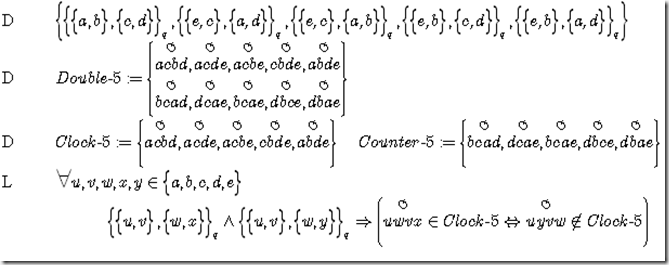






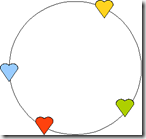

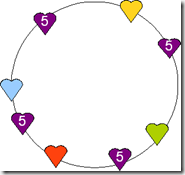



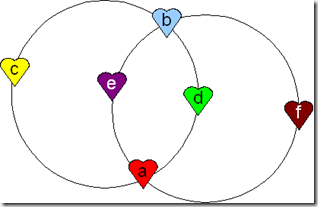 Obviously there should be some new circles formed by elements of both and the new circles will share the elements a and b. Yet not all combinations of 4 new circles would be mutually compatible (lemma 3). Axiom 4.1 offers the only two choices possible: (an inner {{a,b},{d,e}} and an outer circle {{a,b},{c,f}}) or (a left {{a,b},{c,e}} and a right circle {{a,b},{d,f}}).
Obviously there should be some new circles formed by elements of both and the new circles will share the elements a and b. Yet not all combinations of 4 new circles would be mutually compatible (lemma 3). Axiom 4.1 offers the only two choices possible: (an inner {{a,b},{d,e}} and an outer circle {{a,b},{c,f}}) or (a left {{a,b},{c,e}} and a right circle {{a,b},{d,f}}). 
